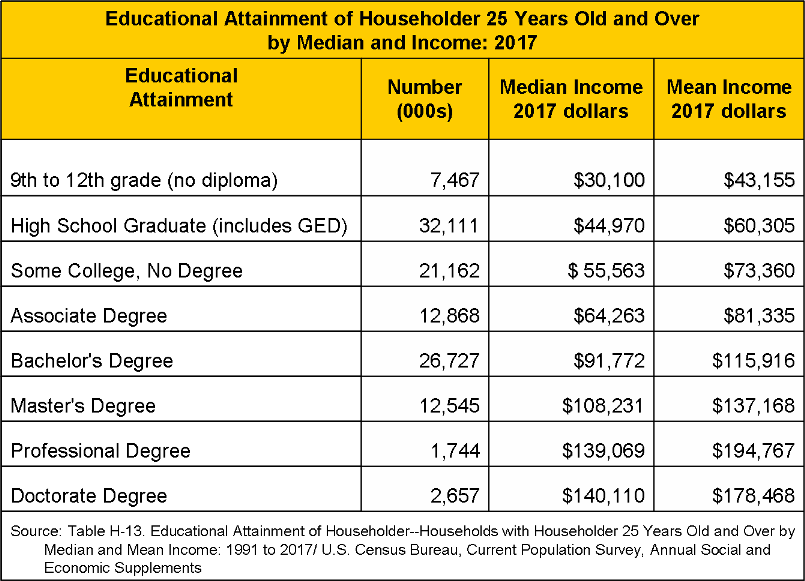For most Americans, affluence is a period of life, not a permanent condition. At some point we finally reach the peak of our earning potential, enjoy the view for a while, then slide down the slope, some faster than others. For most Americans, that earning potential is pretty high: over two-thirds of the US population get to dwell in the realm of the top income quintile for at least a year before they hit 60. And more than a third make it to the top 5%. Here are some hard numbers:
I don’t want to overstate the transience of affluence, though; as the above table shows, a good number of American households that reach the top income quintile stay (or return) there for several years - allowing them to build wealth to sustain them through their golden years. Who are these people?
Well, for one, they’re not young adults:
For another, they’re mostly families with at least two earners in the household, at least one of whom works full-time:
As for education, assuming there are two earners in the household, a four-year college degree is not essential for a household to get into the top 20% of the US income distribution (reminder: lower limit cut-off was $126,855 in 2017). Two adult earners with some education or training past high school have a decent chance of getting there eventually:
But it’s not all about education or even occupation: many top 20% households got there via “pass-through” business income:
That’s it for now - it took me forever to put together these tables and I‘m pooped. More to come.
Next: Occupations of householders in the top 20% of the US income distribution.




